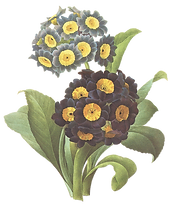Do's and Don'ts of Mint
- Cynthia Thomas
- Jul 19
- 3 min read

I reached over the little herb garden fence and grabbed a handful of mint tops for Mojitos that evening. Refreshing wafts of deliciousness floated my way and I even tucked one behind my ear, trying to savor the smell.
As I collected my ingredients and muddled up the mint in the bottom of my glass, I anticipated that wonderful Cuban summer combination of lime, mint and sparkling water – with a little rum – that would greet my palate. Instead, I drank in what could only be described as dirt. Of course, you could say earthy, or natural or some other nice words, but my mint was anything but minty.
So what if, instead of a refreshing zing, your mint tastes dull, bitter, or even bland? If you are growing it at home (preferably in a pot because it is an aggressive spreader) soil quality plays a significant role in the flavor profile of mint. Mint requires well-draining, fertile soil with a pH between 6.0 and 7.0. If the soil lacks essential nutrients like nitrogen, phosphorus, or potassium, the mint plant may not produce the desired flavor compounds. For example, a lack of nitrogen can lead to a decrease in the production of menthol, the compound responsible for mint’s characteristic cooling sensation.
According to HomeDiningKitchen mint flavor is not only affected by macronutrients, but also requires micronutrients like iron, zinc, and calcium to produce optimal flavor. Iron deficiency, in particular, can result in a bitter or unpleasant flavor in mint.
Believe me, my mint was unpleasant.
I have since learned that you should use spearmint in mojitos, not peppermint, as the flavor is more subtle and agreeable with the other ingredients. While both are members of the “Mentha” family, they’re vastly different in the amount of menthol they contain; 40% for peppermint versus .05% for spearmint. Menthol is responsible for the cool sensation you get when you brush your teeth or chew a piece of mint gum. While the effect is sensory, not actual “coolness”, this is not preferable for recipes that you want to eat. Or drink -

So this is what I’ve learned in adding spearmint to culinary delights:
1. Wash your mint – even if it looks clean, rinse and dry. Store in a cup of water in the refrigerator if you’re using it for later
2. Do not over muddle (crush) the leaves – some bartenders just slap the mint
3. A little goes a long way – you only need about 6 leaves for a drink. In the case of mint, more is not better.
For a complete guide to making a mint drink, here is an exhaustive description of choosing your mint and muddling it properly: https://cookingagain.com/how-do-you-pick-mint-for-mojitos/
And if, for some crazy reason, your mint still tastes bad, it could be that your tastebuds are affected by age, medication or medical conditons, this is known as “dysgeusia.”
Studies show your sense of smell is responsible for about 80% of what you taste. Your nose and throat share the same airway, so chewing some foods allows food aroma to make its way to your nose through the back of your mouth. Olfactory training therapy involves daily exposure to different odors for several weeks. Over time, what you smell stimulates your olfactory system in your brain and re-establishes your memories of that smell.
Not easy to diagnose or treat, it depends on why you have dysgeusia. For example, if medication is causing dysgeusia, changing medications may help. If you have a viral infection like COVID-19 that affects your sense of smell and taste, your healthcare provider may recommend olfactory training therapy.
Something as simple as enjoying mint is more complicated than meets the eye.























Comments